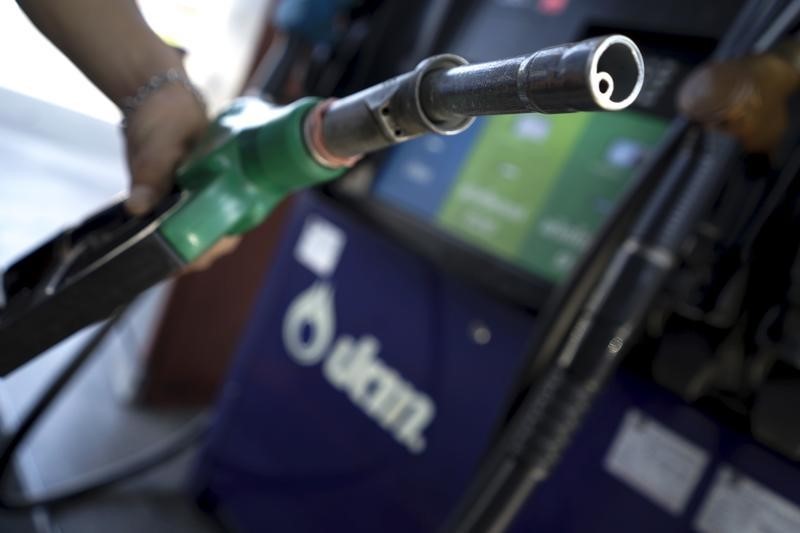By Barani Krishnan
Investing.com -- Oil futures jumped 2% Wednesday on data showing another sizable weekly drop in U.S. crude stockpiles and the first plunge in three weeks in gasoline inventories that came amid a drop in pump prices of fuel.
New York-traded West Texas Intermediate, or WTI, crude for September delivery was up $2.28, or 2.4%, at $97.26 per barrel.
London-traded Brent crude for October delivery settled up $2.21, or 2.1%, at $101.67.
U.S. crude oil inventories slumped by 4.52 million barrels last week, against a forecast drop of 1.5 million, the Energy Information Administration said in its Weekly Petroleum Status Report. Crude stocks fell 446,000 barrels the prior week, after an earlier two-week buildup of almost 11.5 million barrels.
The latest drop in crude inventories came as the EIA reported a relatively smaller drawdown of 5.6 million barrels of crude last week from the Strategic Petroleum Reserve. Weekly drawdowns from the national oil reserve had previously ranged between 6 million and 7 million barrels over the past month.
The Biden administration has been depending heavily on the reserve to add crude supplies to the market to ease the global supply deficit in oil in the aftermath of the Ukraine conflict and its resulting sanctions on major energy exporter Russia.
Aiding the decline in crude inventories were exports, with a massive uptick in U.S. crude exports to 4.55 million barrels daily from a previous 3.76 million.
But more important than the crude balance was the data on gasoline.
The EIA reported that gasoline stockpiles tumbled 3.3 million barrels during the week ended July 22 after climbing a combined 9.32 million for the weeks ended July 15th and July 8th.
Industry analysts tracked by Investing.com had anticipated a drop of just around 1.0 million barrels of gasoline for last week.
The slide in inventories of gasoline — the main automobile fuel in the United States — came as pump prices for the fuel fell from a record high of $5.01 per gallon in mid-June to $4.30 now.
EIA data showed last week’s pump demand for gasoline at 9.25 million barrels, just a shade lower than the 9.33 million seen the same week a year ago. Last week, pump demand was at 8.5 million barrels, versus the previous annual weekly figure of 9.3 million.
“There’s definitely no doubt that cheaper gas at the pump has been spurring people to fill their tanks up more regularly,” said John Kilduff, an energy markets commentator and partner at New York hedge fund Again Capital.
“This might be a vindication to oil bulls who had their fortunes marred by the stockpile buildups of the past two weeks. But the flip side of it is once pump prices go back up on this data, then consumption of gasoline might fall. If anything, we are seeing that demand for fuels is more elastic now than previously thought.”
EIA data also showed that stockpiles of distillates — the oil variant required for making the diesel needed for trucks, buses and trains, as well as the fuel for jets — fell by 784,000 barrels last week. Analysts forecast a distillates decline of 500,000 barrels last week, after the previous week’s slide of 1.3 million.
The only bearish element in the EIA report, if any, was the surge in U.S. crude production to 12.1 million barrels per day last week from a previous daily output of 11.9 million barrels.
